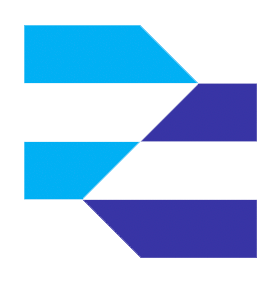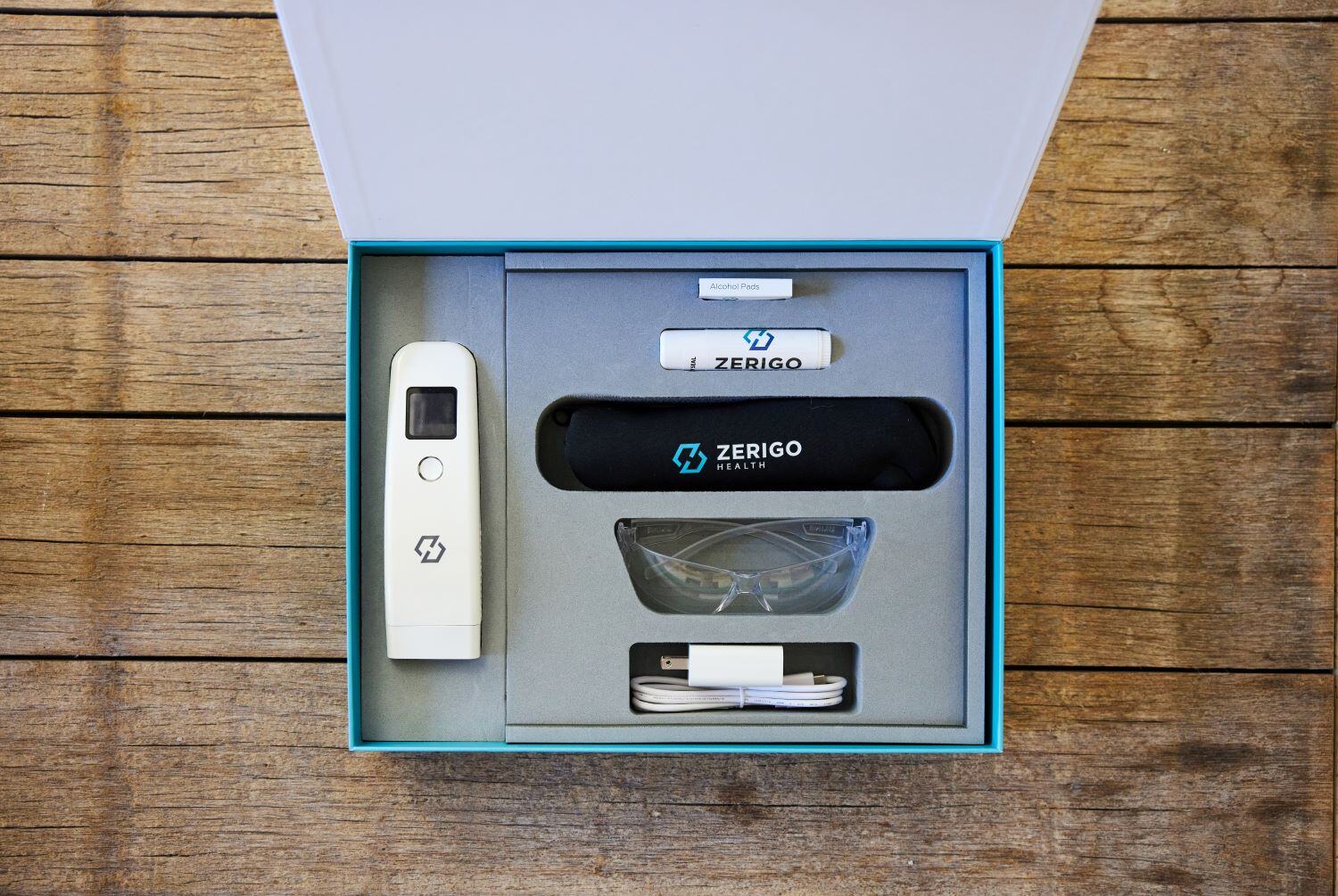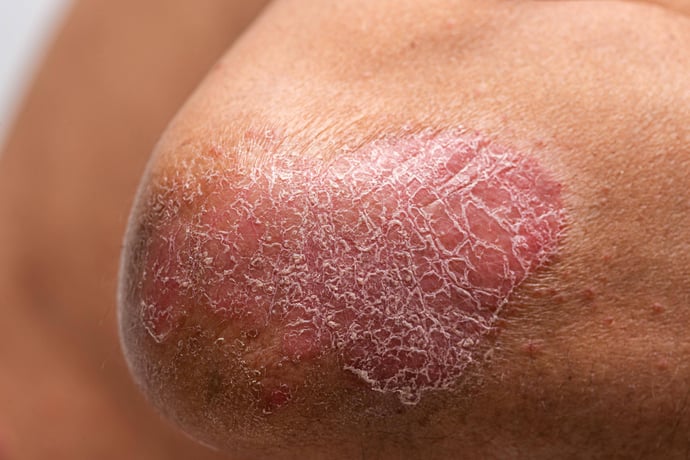By Joe Roberts
Health Tech World hears from Zerigo Health, the only company combining digital health with at-home phototherapy for chronic skin conditions.
Chronic autoimmune skin conditions - namely psoriasis and eczema - affect millions of people worldwide.
Nearly one in 10 people live with a chronic autoimmune skin condition.
Among these conditions, psoriasis is most prevalent, affecting around 3 per cent of the global population.
The economic burden is enormous, with treatment costs estimated to range from $25 billion to $70 billion annually.
These conditions can often last a lifetime, and with that comes an emotional toll.
Studies show that 88 per cent of individuals suffering from psoriasis report a significant impact on their emotional wellbeing.
This is particularly stark during teenage and early adult years when many grapple with self-esteem and body image issues.
“This is not only a physical challenge that people have,” said Frank D'Amelio, CEO of Zerigo Health, a digital platform and device for treating chronic skin conditions.
“The sad part about it is that this is a lifetime disease [and] it's a noticeable disease.
“As they're going through puberty and they're in their teens, you can just imagine the impact that it would have on them and their life.”

The Limitations of Traditional Treatments
Traditionally, psoriasis and eczema patients have relied on topical treatments, including steroidal creams to stay on top of their condition.
While initially effective, these treatments often have diminishing results over time and carry potential side effects.
For this reason, most doctors limit the amount of time a patient is prescribed steroid-based treatments.
UVB phototherapy is a proven treatment with over 25 years of literature supporting its efficacy.
It was first introduced in dermatologists' offices, but the inconvenience of frequent visits and the costs that come with it have limited its widespread adoption.
"Think of a tanning booth that is not horizontal, but vertical," D'Amelio said.
“Physicians would dedicate a room in their dermatological suite for patients to come in and stand in this booth for [around] 20 minutes.
“They would have to come back multiple times a week And they'd be doing that for 12 to 14 weeks.
"I don't have to tell you what the adherence rate would be like for something like that."
Instead, patients have increasingly turned to oral systemic drugs and injectible biologics, which come with a hefty price tag and another list of potential side effects.
"A journey that many people would have gone through is topicals, then going into the derm's office for UVB treatment, oral drugs and then biologics," D'Amelio said.
Over the last 15 years, UVB has become less and less popular.
The inconvenience for patients and the expense to clinicians of dedicating an entire room to the treatment means many patients skip phototherapy and go straight to oral systemics.
Bringing phototherapy into the home
Zerigo Health's vision is to bring clinical-grade phototherapy into the home.
Other phototherapy devices exist for treating eczema and psoriasis, but Zerigo is aiming to set itself apart by providing an integrated “ecosystem”, including a clinical-grade device and a digital platform that records progress and connects patients with clinicians.
“Other [companies] could take a fluorescent light bulb, strap a battery on it and put an on/off switch on it,” D’Amelio said.
“What we had developed is a mobile device, but that's only a small fraction of the whole ecosystem.”
At the heart of this solution is the company's FDA-cleared, handheld Smart UVB Light Therapy device which is equipped with state-of-the-art LED technology.
A proximity switch tells users when the light is the correct distance from the skin and the flat surface of the LED light allows for uniform energy application.
“The top of the [LED] is very flat energy,” D'Amelio explained. “It takes a lot of engineering to get everything to reflect and space properly.
“What does that mean for the patient? It means no hotspots. It means that the centre of where they're treating is not more intense than the sides so they're getting a very uniform application of the energy.”
The device connects to a mobile app via Bluetooth, collecting data, notifying users when it's time for their next course of treatment and tracking treatments based on their doctor's advice.
“It's keeping track of where you're treated, how long you're treated for and it is pre-programmed to follow the American Association of Dermatology guidelines,” D'Amelio said.
“So, the person doesn't have to pull out a calculator and start doing college math to figure this out.”
This information is then uploaded to the cloud where all past treatments are stored along with before and after pictures to help them track their improvement over time.
“It's really important to have before and after pictures,” D'Amelio said. “Because people's memory isn't all that great at tracking their progress, particularly when things are shrinking [so] slowly.
“When it's slowly going into remission, it's great to be reminded, 'Hey, seven weeks ago, this is what it looked like. Look at it now.'”
Patient guides are also built into the platform.
Comprising registered nurses and health coaches, these dedicated professionals engage with patients via the app, offering emotional coaching, reminders and encouragement.
They also monitor treatment adherence and advise on patients’ treatment journeys.
The fourth element of the app is a reporting system which connects the patient with their doctor.
Growing demand for holistic treatment
Zerigo Health's approach fits into wider trends in healthcare towards at-home treatments, reducing the need for unnecessary visits to in-person consultations.
D'Amelio also believes as patients become more educated about the side effects of pharmaceutical treatments, increasing numbers will be seeking out more holistic and natural approaches to managing their skin conditions.
He said: “We're finding that more and more [patients] are stopping the commercials that they see on TV advertising these drugs, freeze-framing the fine print and reading it.
“They're thinking 'Oh my God, I didn't know about that [side effect]. What the heck is that?'.”
Zerigo's device and platform are currently used by “hundreds of patients” in the US.
Following a $43 million Series B investment round in 2021, the company is aiming to broaden its reach and respond to increasing demand from the over 40 million Americans living with psoriasis, vitiligo and eczema.
Currently only available in the United States, Zerigo Health is now working to make its platform a covered benefit under private health plans.
D'Amelio added: “Once it becomes a covered benefit, then it's something that is, 'paid for' by the insurance company, so it's then free to the patient.
“We're just buttoning up the final steps there.”





